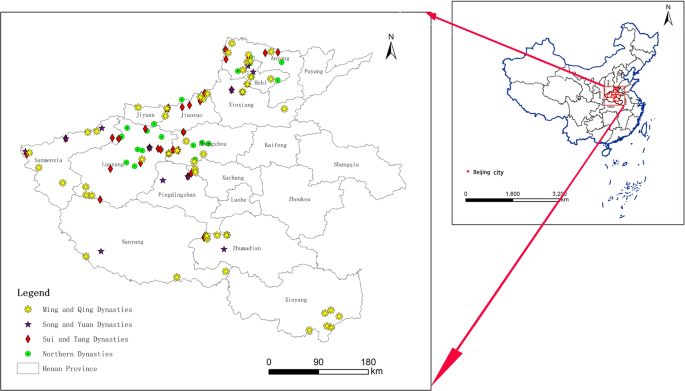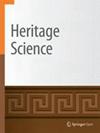Analysis of the relationship between the temporal and spatial evolution of henan grotto temples and their geographical and cultural environment based on GIS
IF 2.6
1区 艺术学
Q2 CHEMISTRY, ANALYTICAL
引用次数: 0
Abstract
Abstract Grotto temples in Henan Province, which began in the Northern Wei Dynasty and ended in the Republic of China, have been excavated and repaired to varying degrees in the Sui, Tang, Song, Yuan, Ming and Qing dynasties. In this study, 119 grotto temples sited in Henan Province were considered as the research object, and the spatial and temporal distribution of grotto temples in Henan Province is analyzed by using the method of quantitative geographic analysis and ArcGIS 10.5 software. The analysis results indicate that the grrotto temples (including cliff statues) in Henan Province tend to have a cohesive distribution, with uneven regional distribution, mainly concentrated in the western and northern regions of Henan. The distribution direction and center of the grotto temples (including cliff statues) did not change much during the Northern Dynasties, Sui and Tang dynasties, and Song and Yuan dynasties, mainly distributing in the northwest of Henan. However, the situation underwent significant changes and began to migrate to south of Henan, reflecting the changes the changes in the political and cultural center at that time. The spatiotemporal distribution of the cave temples (including cliff statues) was based on the related topography, river systems, stratigraphic lithology, road traffic, and was direct or indirect influenced by the authorities as well.

基于GIS的河南石窟寺庙时空演变与地理文化环境关系分析
河南石窟寺始于北魏至民国,在隋唐宋元明清时期都有不同程度的挖掘和修复。本研究以河南省119座石窟寺庙为研究对象,运用定量地理分析方法和ArcGIS 10.5软件,对河南省石窟寺庙的时空分布进行了分析。分析结果表明,河南省石窟寺庙(含岩壁造像)分布趋于凝聚力,区域分布不均匀,主要集中在豫西和豫北地区。北朝、隋唐、宋元时期,石窟寺(含崖像)的分布方向和中心变化不大,主要分布在豫西北地区。然而,这种情况发生了重大变化,并开始向豫南迁移,反映了当时政治文化中心的变化。洞穴寺庙(含岩壁造像)的时空分布受相关地形、水系、地层岩性、道路交通等因素的影响,也直接或间接地受到当局的影响。
本文章由计算机程序翻译,如有差异,请以英文原文为准。
求助全文
约1分钟内获得全文
求助全文
来源期刊

Heritage Science
Arts and Humanities-Conservation
CiteScore
4.00
自引率
20.00%
发文量
183
审稿时长
19 weeks
期刊介绍:
Heritage Science is an open access journal publishing original peer-reviewed research covering:
Understanding of the manufacturing processes, provenances, and environmental contexts of material types, objects, and buildings, of cultural significance including their historical significance.
Understanding and prediction of physico-chemical and biological degradation processes of cultural artefacts, including climate change, and predictive heritage studies.
Development and application of analytical and imaging methods or equipments for non-invasive, non-destructive or portable analysis of artwork and objects of cultural significance to identify component materials, degradation products and deterioration markers.
Development and application of invasive and destructive methods for understanding the provenance of objects of cultural significance.
Development and critical assessment of treatment materials and methods for artwork and objects of cultural significance.
Development and application of statistical methods and algorithms for data analysis to further understanding of culturally significant objects.
Publication of reference and corpus datasets as supplementary information to the statistical and analytical studies above.
Description of novel technologies that can assist in the understanding of cultural heritage.
 求助内容:
求助内容: 应助结果提醒方式:
应助结果提醒方式:


